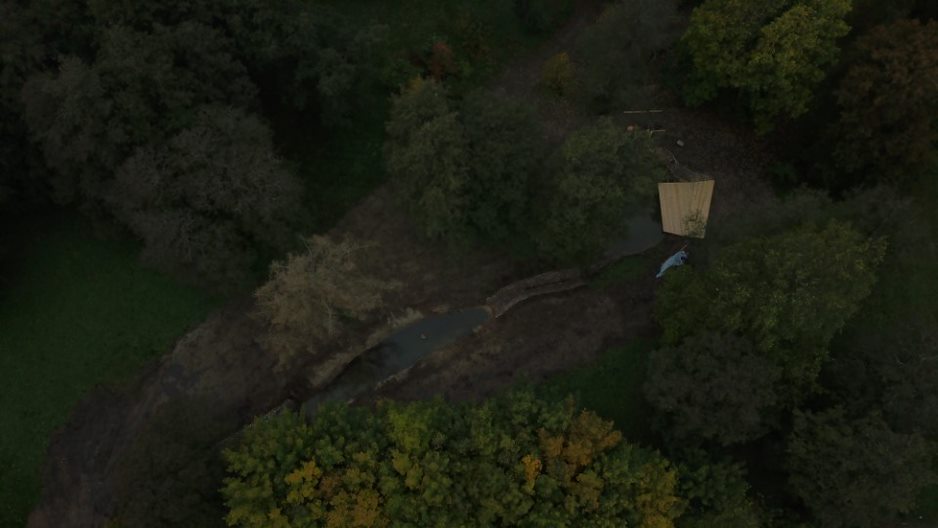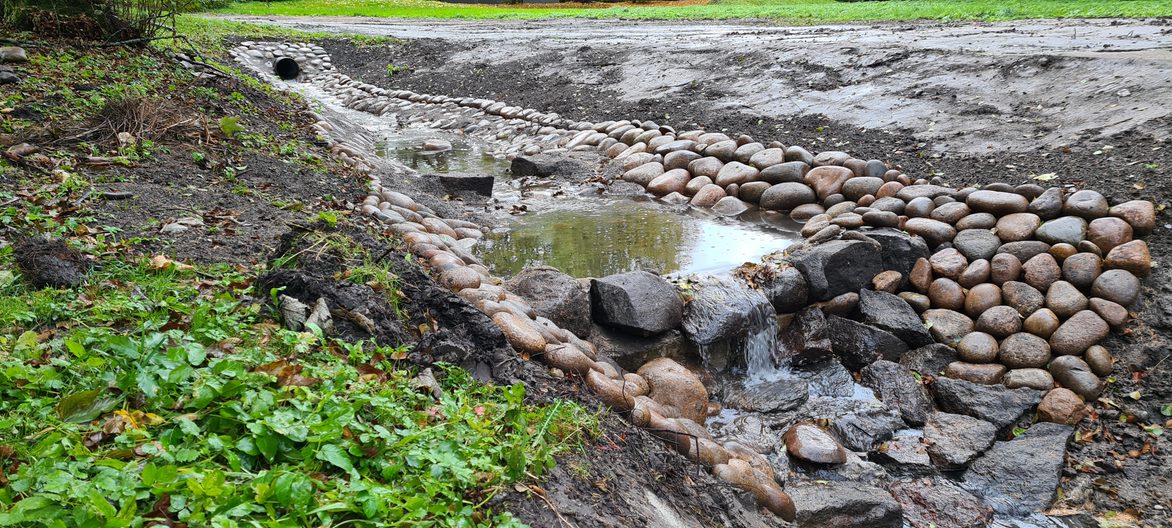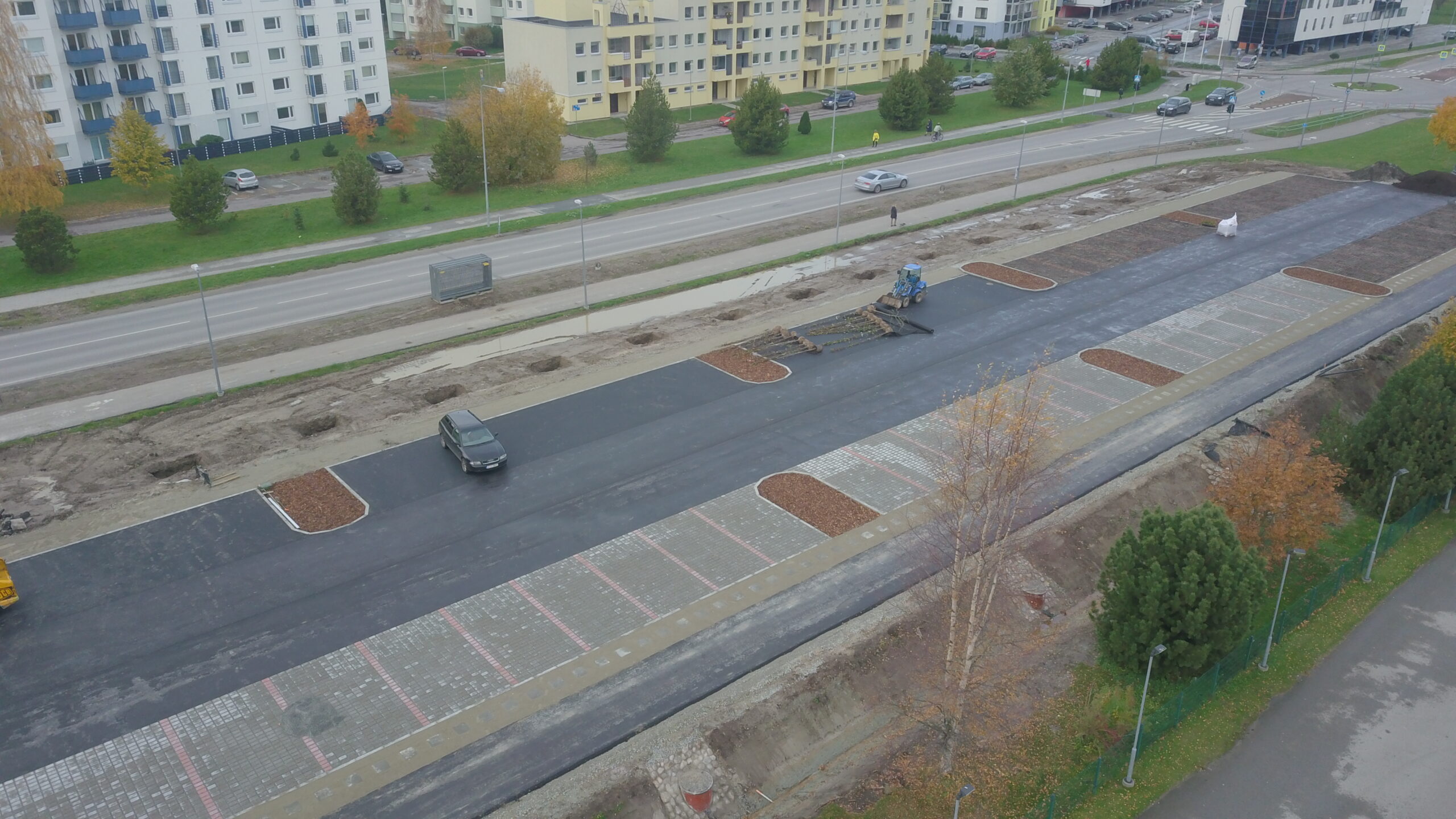In the course of the LIFE UrbanStorm project, sustainable rainwater solutions were built in Viimsi in two test areas – Viimsi manor park and Randvere tee car park, which help to reduce the rapid entry of rainwater into the sewerage system and thus prevent flooding. The results of the project show how such solutions improve urban space by being more attractive and flexible in adapting to climate change than the traditional sewerage system.
Two very different areas were selected as project demonstration areas. A large part of the residential area around the Pärnamäe reservoir and the rainwater of Viimsi flows through the park of Viimsi manor. Before the start of the construction work, the ditch in the south-eastern part of the park and its excessively humid surroundings were overgrown and quite unaesthetic. The aim of the test area was to use sustainable stormwater systems in the park, which drain the soil, protect the banks of the ditch from erosion, reduce the flow rate in the ditch and make the park more popular with locals.
Within the framework of the project, the existing ditch was cleaned and various elements were installed, such as a waterfall, rapids and a wooden platform. The design used materials that are already present in the park and are also suitable for the historical environment, thus emphasizing the character of the place. The ditch is made interesting by the alternation of sections with a wider water mirror and water barriers and rapids.
Hard surfaces reduce the possibility of rainwater infiltration and evaporation, which increases the load on the city’s stormwater drainage and can lead to floods and pollution. Parking lots are one of the largest increases in the share of hard surface in the urban environment, which is why the Randvere tee car park was chosen as the second test area, where a sustainable stormwater system was built. Areas with three different pavements (drainage asphalt, grass-filled and gravel-filled aggregate) were built in the car park with the aim of conducting pavement water permeability tests. In addition, a new drainage ditch was built in the back of the car park, which receives the drainage water from the car park and the base of the rainbed in the middle of it. A rain bed (a vegetated area created to collect rainwater) will be built in the middle of the car park in the next phase, which will focus on transforming the existing car park infrastructure into sustainable one.
The driving area, which is also the largest paved area, was made of plastic asphalt. Plastic asphalt is produced in the Scottish company MacRebur, where pellets made from recycled plastic waste are melted into the asphalt mixture. The addition of the plastic pellets makes it possible to reduce the amount of bitumen used in the asphalt and thus reduce the ecological footprint of road construction. The use of plastic granules in asphalt mixtures also helps to improve the quality of the road surface. Viimsi parish is the third place in Estonia where a plastic road has been built (test sections have also been completed in Tallinn and Järva County).




